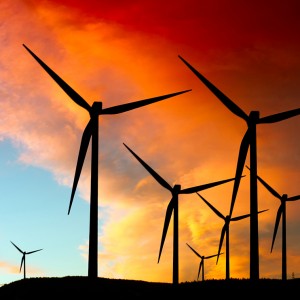State-owned Hydro Tasmania drops off its $2 billion wind farm project planned for Kings Island claiming that it is no longer economically viable.
The state-owned power generating company had originally intended to build a 600 megawatt wind farm on the island.
The power that the wind farm will generate is supposed to be connected to the National Electricity Market through a high-voltage underwater cable across Bass Strait to Victoria.
Hydro Tasmania estimated energy output
Hydro Tasmania estimated that the electricity production of the wind farm will be 2,400 gigawatt hours of renewable energy. This amount of electricity can power approximately 240,000 homes.
Steve Davy, Chief Executive of Hydro Tasmania claimed that the changing economic conditions had caused the estimated capital for the wind farm to increase by about $150 million.
“We have exhausted all avenues by which this concept could progress and now do not believe it appropriate to continue with the feasibility study,” said Davy.
“We will now focus our resources on further investigating the benefits and viability of a second inter-connector as outlined in the Tasmanian Government’s recent state budget,” he explained.
The Energy Minister of Tasmania, Matthew Groom, concurs with the move taken by Hydro Tasmania by saying that the company “did the right thing.”
“Hydro Tasmania has today made a commercial decision that they won’t be proceeding with the King Island Wind Farm proposal on the grounds that the proposal unfortunately has been found to be not economically viable,” said Groom.
Hydro Tasmania’s Steve Davy adamant the decision was not due to local opposition or RET concerns
Steve Davy attempted to justify his company’s decision to get out of the project. He argued that the decision to abandon King Island was not the result of local opposition, or the uncertainty over the renewable energy target.
He claimed that it was a simple case of the economics not working. The drop in the Australian dollar plus some other contributory factors meant that the capital costs of the project had increased by $150 million. “It is not economically viable,” said Davy.
Another probable reason for the ditching of the project is the expensive cost of the cable to the mainland. The cable would not have reached an ideal site in the mainland partly because of the removal of manufacturing capacity in Victoria.
Even then, Hydro Tasmania will still proceed in looking for the possibility of building a second inter-connector, by laying down a new high-voltage underwater cable across Bass Strait. These alternatives are cheaper than the TasWind project.
Most of the King Island residents will be disappointed with this recent development. According to a survey taken in mid-2013, around 59 per cent of them wanted the project to proceed. About 60 workers would have been employed in the project.
Davy says he will continue his support for Tasmania
Davy thanked the residents of King lsland for their input in the process and assured them that Hydro Tasmania will continue to support the island.
“We recognize that the TasWind project has created significant community debate on the island over the past two years,” said Davy. We also recognise that today’s announcement will be received with mixed emotions,” he added.

